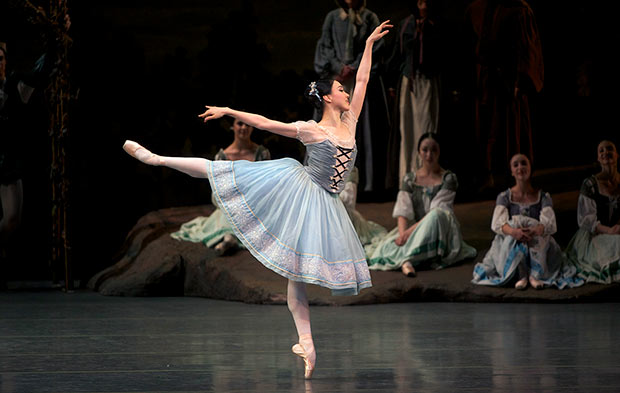
© Gene Schiavone. (Click image for larger version)
American Ballet Theatre
Giselle
★★★★✰
New York, Metropolitan Opera House
14 May 2018
www.abt.org
metropolitan-opera-house.com
I’ve always been quite fond of the American Ballet Theatre (ABT) Giselle production. It never seems to stay out of the company’s repertoire for long, and with good cause: their corps is exceptionally solid, they seem to selectively choose the principals who dance the role, and this strength is maintained even though the company chose to do away with most of the guest stars who are often invited to join them, save for Natalia Osipova on May 18.
The performance kept much that will be familiar to seasoned viewers, including the 1987 sets by Gianni Quaranta. The performance I watched was the first time I have seen Hee Seo in the title role. She debuted it in 2011, and her experience shows. It helped that her frail romantic lines are perfectly suited to the role, allowing her to effortlessly convey the young girl’s innocence and insuppressible urge to dance. Seo established the ballet’s loveliest dichotomy, that between the lead’s naive, earnest sincerity and her ruthless technique. She is a generous dancer, informed by having danced every rank in the company – she worked her way from the ABT Studio Company to an apprenticeship in 2005 and joined the corps in 2006.
Seo was joined by other largely excellent performances. While the first act largely consists of miming and dancing, the second act melds them together, with the mime as an integral part of the dancing. One massive success of ABT’s production is that the miming is not overplayed in either act. Roberto Bolle, who played his usual striking Albrecht, responded to Seo with nuance and subtlety. The same goes for how Seo revealed Giselle’s madness, perhaps one of the trickiest sections of the ballet. In French romantic ballet, the mad scene is specifically to convey a women who finds herself more firmly situated in an alternate reality. When Giselle runs past her mother (who reaches out to console her), instead flinging herself to the ground averting her eyes, she is doing so to conceal from herself what she cannot face. When Albrecht reaches out to her, it is as if she looks through him to see something hidden from the other characters and audience.

© Gene Schiavone. (Click image for larger version)
The mad scene is not merely spectacle, rather, it is meant to establish the Giselle’s emotional context for the second act, when the young, innocent girl becomes a somewhat more disillusioned girl-ghost. This transition is not sharp, like that of the black and white swans in Swan Lake, rather, it provides a murky realm in which Giselle’s internal conflict is allowed to play out: we are not seeing Giselle’s character turn dark, but rather, she has suffered the trauma of Albrecht’s deception, and now, she is a ghost. Giselle’s push-and-pull in the second act was once explained to me by a ballet teacher who asked: don’t you think Giselle wants, even a little, to hand over the man who hurt her, took her sanity, to the Wilis? She now exists among a cohort of women who express themselves only through dancing, as she always desired to do in life. Would she not find some comradery with these ghostly women — in dance and in having been betrayed by the men they loved?
Giselle, a young woman destroyed by dancing, the thing she loves most, is too obvious an allegory for dancers, and perhaps the most compelling experience as an audience member is seeing how much of herself a dancer will bring to the role. Seo does not offer any particular unexpectedness in her interpretation of the role. Her focus seemed to be on retaining Act I Giselle’s humanity, rather than entertaining any level of internal conflict. However, her spirit was generous, and her dancing was lovely and unforced: she melted into her penchee arabesques, making a still, structured pose somehow fluid. Her grand jetes appeared nearly boneless. Seo and Bolle make a delightful appeal as a couple demonstrating their love to the ghosts, hoping it might spare Albrecht the same fate that Giselle has already suffered.
Gillian Murphy plays a suitably merciless Myrtha and gives a strong sense that it is indeed her controlling the homogenized Wilis, who are united in their loyalty to her and in their undiscerning vengeance toward men. The crowd who got to see her play the protagonist on the 19th must have been in for a treat. Murphy, long one of the stars of ABT, made her debut as Giselle only last year. The corps’ strength shines in the second act as well, with no lapse in their synchronized responsiveness to Myrtha.

© Gene Schiavone. (Click image for larger version)
An oft-neglected component in ballet reviews is that of the music and orchestra. The Giselle score is not particularly sophisticated, and perhaps as a result, not entirely thrilling to play. Cyril W. Beaumont wrote in his excellent 1944 book The Ballet Called Giselle that while the music left much to be desired, it “still exerts its magic. It is no less potent than the Wilis in its power to captivate and enchant those members of the audience willing to surrender to its mood.” The American Ballet Theatre Orchestra is superb and creates a mood and cadence easy to surrender to — a feat no less important or difficult than the dancing.
The performance’s audience was especially enthusiastic, though as a former dancer, I cannot help but wonder if the audience members who feel warranted in letting out a “Brava!” simply because a character has made an entrance — as many did — do not detract from appreciation for when a dancer has done something truly laudable. Just the night before the performance, I saw Fran Lebowitz in conversation with Nick Mauss about his exhibition on modernist ballet, “Transmissions,” at the Whitney. Lebowitz spoke of attending City Ballet performances with Jerome Robbins, and commented on contemporary audiences’ over eagerness to applaud, referencing a conversation with City Ballet principal Sara Mearns, who said it could make it difficult to hear the music over the cacophony. As Lebowitz put it, “It is themselves they are applauding.”
The strength of ABT’s Giselle comes not only from the individual performances, but the ongoing investment the company places in the romantic classic over many seasons. To see Giselle at ABT is to see a reliable, sturdy performance, steeped in longevity. The pleasure for the audience comes from this consistency as much as the subtle changes in interpretation over time, and ABT makes a pleasing case for maintaining the valuable classic.













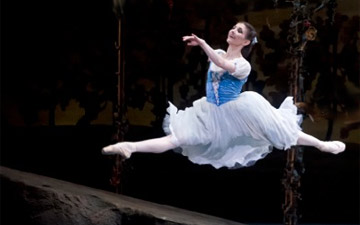
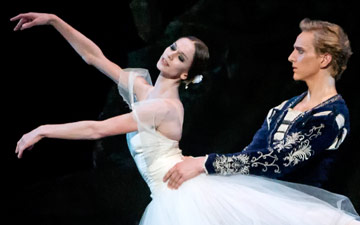
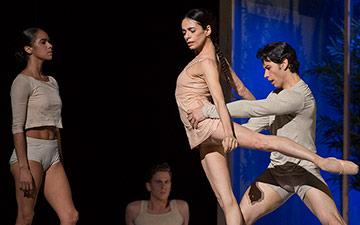
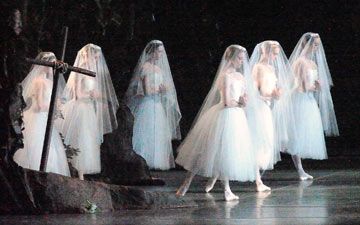
Wonderful discernment and fascinating analysis